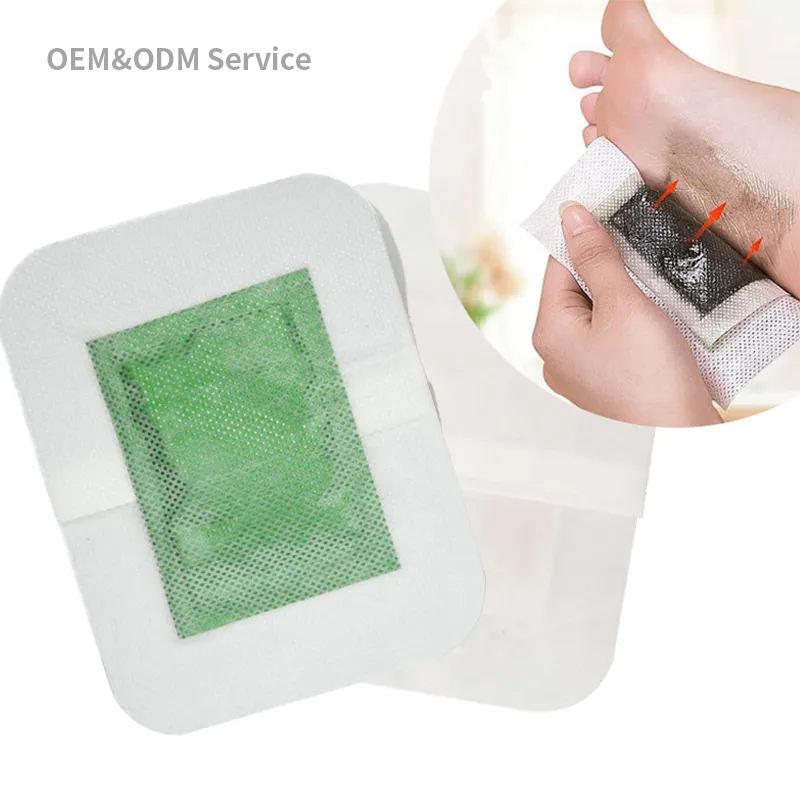Author:Kangdi 27-11-2023
As detox foot patches continue gaining devotees drawn to their simplicity and purported cleansing powers, how do these sticky pads stack up against proven clinical detoxification protocols relied upon for decades? Evaluating the critical differences helps assess if pads provide comparable detox benefits.
01. Defining the Different Approaches
First, let's differentiate the actual processes between traditional detoxification and foot pad methods:
02. Traditional Detoxification
Clinically-supervised programs like fasting, specialized diets, colonics and intravenous chelation aim to forcefully eliminate toxic accumulations using various mechanisms over days or weeks.
03. Detox Foot Pads
Adhesive foot pads worn nightly for weeks utilize ingredients thought to draw out toxins through the skin more gently but lack clinical oversight.
These diverge significantly in technique, evidence standards and dosing aggressiveness when tackling toxin clearance systemically. But what about actual outcomes?
04. Measuring True Effectiveness
Demonstrating definitive “detox” efficacy requires properly conducted clinical trials monitoring recognized bodily toxin levels before and after. Without rigorous bio-testing, claims of removing toxic burdens stay speculative.
So far, no studies confirm detox foot pads measurably alter blood, urine or hair concentrations of well-established contaminants like heavy metals or chemical pollutants. Yet past trials have validated traditional approaches successfully reducing internal toxicity levels. This meaningful contrast warrants consideration regarding realistic expectations.
05. Speed and Side Effects
Aggressive interventions bring faster acute effects yet commonly provoke adverse reactions like flu-like symptoms, rashes, headaches or fatigue from rapid toxin mobilization. Foot pads elicit much milder gentler responses decreased detox intensity generally tradeoffs greater speed and safety considerations are central when comparing these options.
Of course traditional programs work best tailored to individual lab results through nutritional consultations with practitioners. Patches provide standardized toxin-agnostic application less tailored to personal needs. So considerations around customization, lifestyle impacts and access to expertise add complexity finding the right fit.
06. Evaluating Evidence Gaps
Variation in existing clinical verification between traditional detox and nascent foot pads undoubtedly skews comparison. Absence of evidence holds quite difference meaning than evidence disproving effects.
So while current collective research cannot confirm foot pads efficiently clear toxins internally yet, neither does quality data yet rule out that possibility given intrinsic limitations in design, sample sizes and mechanisms studied. As additional investigation fills these knowledge gaps, the balance of demonstrated effects could shift.
07. Key Takeaways Comparing the Options
Pending further substantiation, tempered interpretations seem prudent:
Traditional detox boasts established toxin-lowering capability from rigorous trials but requires extensive oversight minimizing risks
Detox pads show only theoretical cleansing potential to date lacking irrefutable proof either way
Selecting between them entails deeply personal health, lifestyle and evidence threshold considerations
Continual scientific inquiry as patches increase in popularity should reveal more definitive discernment of tangible user benefits in years ahead. But for now, consumers face the critical choice weighing intensive medical detox against convenient foot pads largely on faith more than proven comparative efficacy.
 0086 19937104978
0086 19937104978





